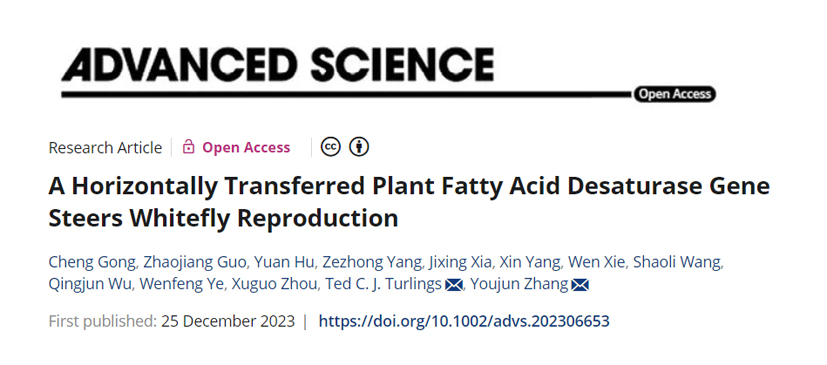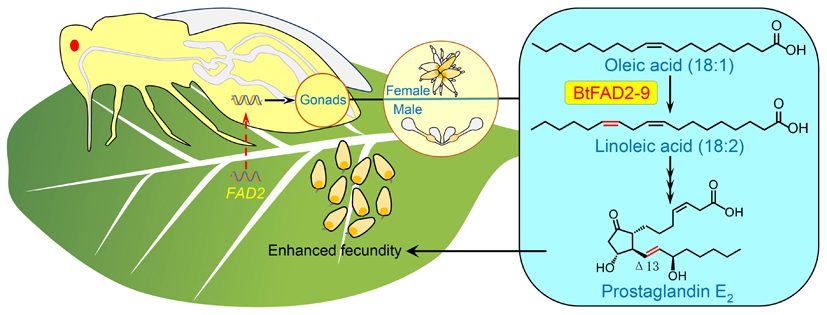Recently, researchers from Institute of Vegetables and Flowers (IVF) of Chinese Academy of Agricultural Sciences (CAAS), in collaboration with Institute of Biology of University of Neuchâtel etc. reported their research results in a paper entitled “A horizontally transferred plant fatty acid desaturase gene steers whitefly reproduction” published in the journal Advanced Science.

Polyunsaturated fatty acids (PUFAs), which contain multiple double bonds between carbon atoms, are essential nutrients increasingly recognized as important to the survival of all organisms. However, the absence of key enzymes in the biosynthesis of PUFAs, Δ12 desaturase, in most organisms results in widely divergent PUFA acquisition capacities among species. The current dogma is that photosynthetic plants, heterotrophic protists, and bacteria account for most of the natural PUFA production because they have the enzymatic components necessary for de novo synthesis, unlike higher trophic organisms. Therefore, most animals acquire PUFAs through their diet in order to satisfy their requirements of essential fatty acids.
The whitefly, Bemisia tabaci (Gennadius), is one the most devastating crop pests worldwide. B. tabaci is extremely polyphagous, and is known to attack more than 600 plant species and shows exceptional host adaptability. Achieving a sufficient nutrient supply from such a broad range of host plants must confront the whitefly with an exceptional nutritional challenge. The way that the whitefly obtains essential nutrients has been studied to some extent, but their ability to synthesize PUFA’s remains poorly understood.
Researchers have characterized a plant-derived Δ12 desaturase gene family BtFAD2 in B. tabaci and show that the BtFAD2-9 gene enables the pest to synthesize PUFAs, thereby significantly enhancing its fecundity. The role of BtFAD2-9 in reproduction was further confirmed by transferring the gene to Drosophila melanogaster, which also increased the fruit fly’s reproduction. These findings revealed an extraordinary evolutionary scenario whereby a phytophagous insect acquired a family of plant genes that enables it to synthesize essential nutrients, thereby lessening its nutritional dependency and allowing it to feed and reproduce on many host plants.

Figure 1. The plant gene BtFAD2-9 empowers the fecundity of whitefly B. tabaci
The research was supported by the National Key R & D Program of China, the National Natural Science Foundation of China, the Beijing Key Laboratory for Pest Control and Sustainable Cultivation of Vegetables, the Science and Technology Innovation Program of the Chinese Academy of Agricultural Sciences and the European Research Council Advanced Grant.
More information can be found through the link: https://doi.org/10.1002/advs.202306653
By Zhaojiang Guo (guozhaojiang@caas.cn)